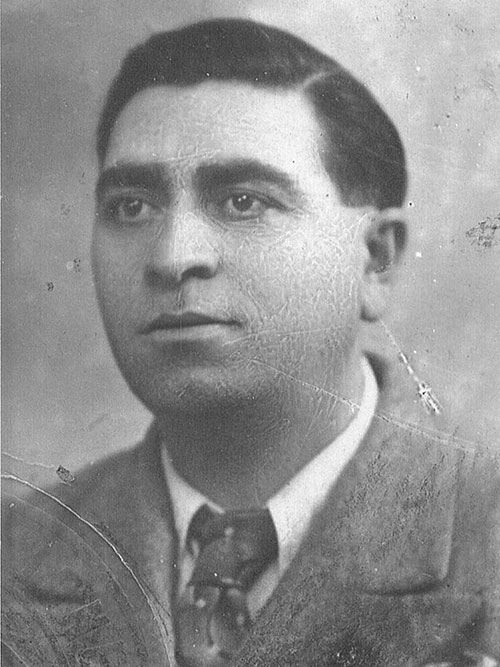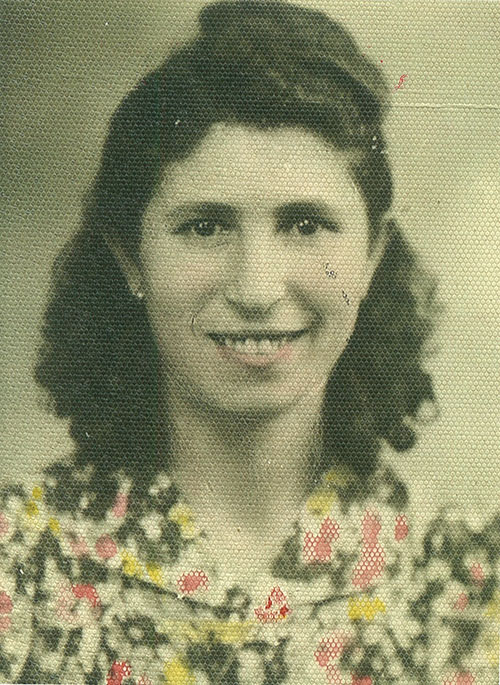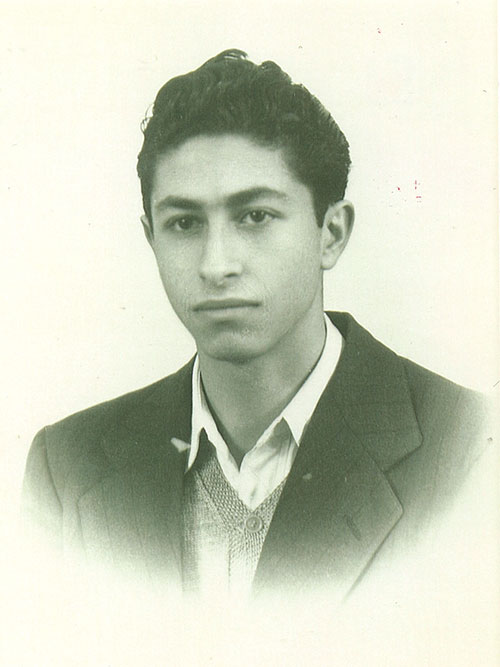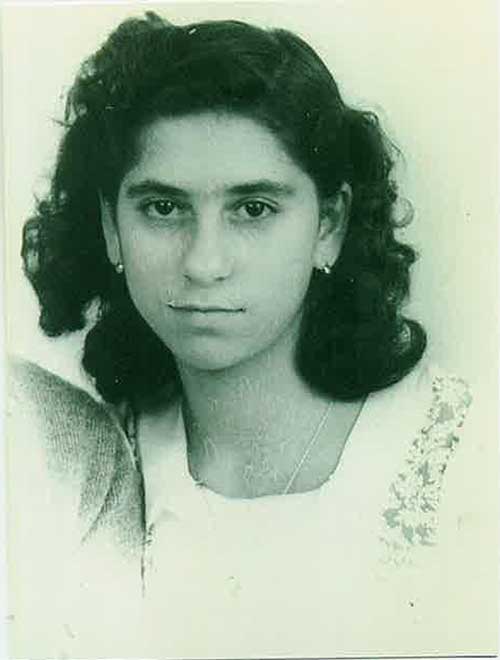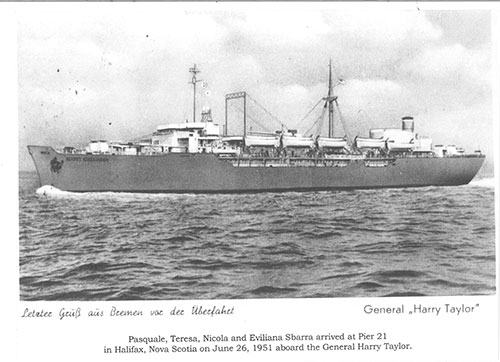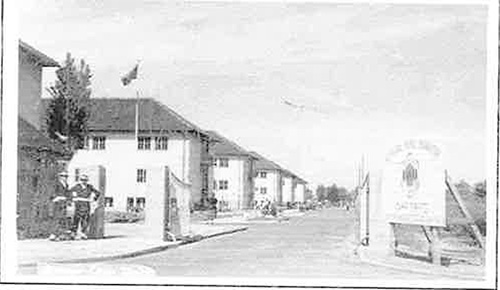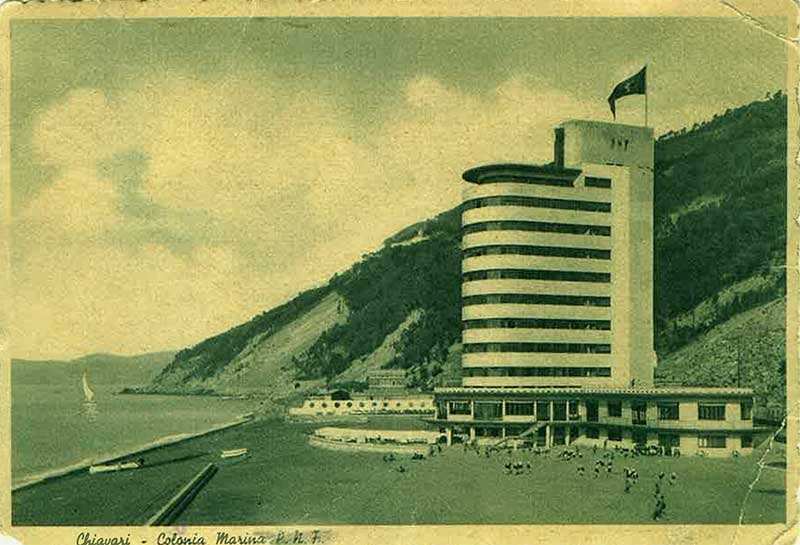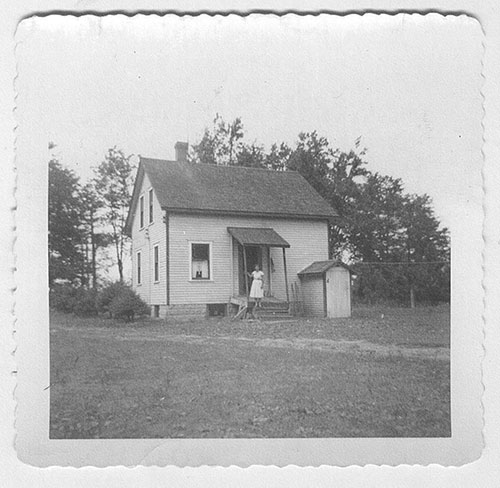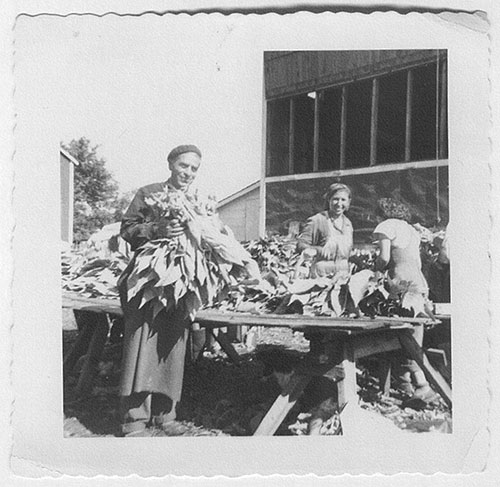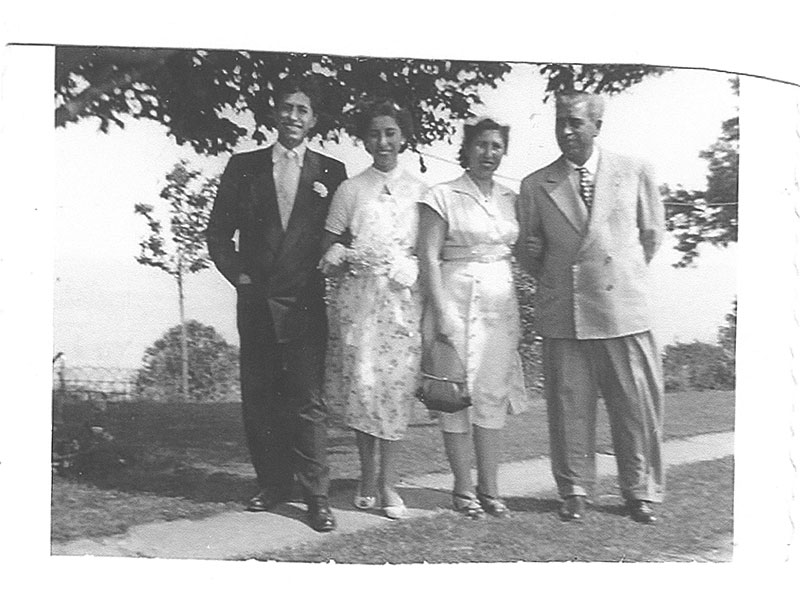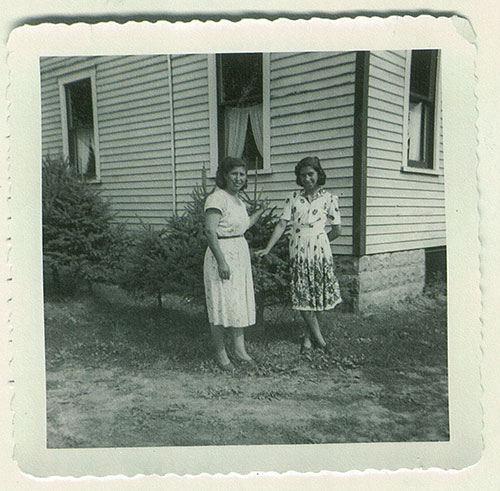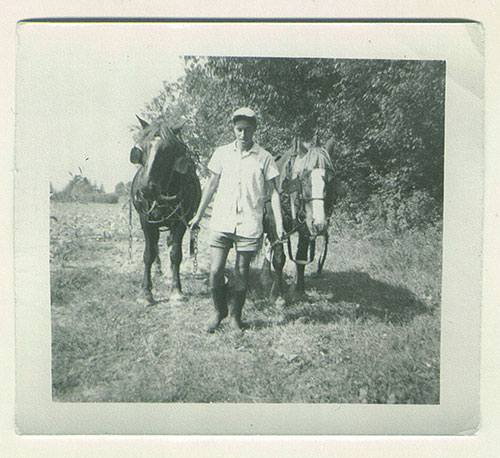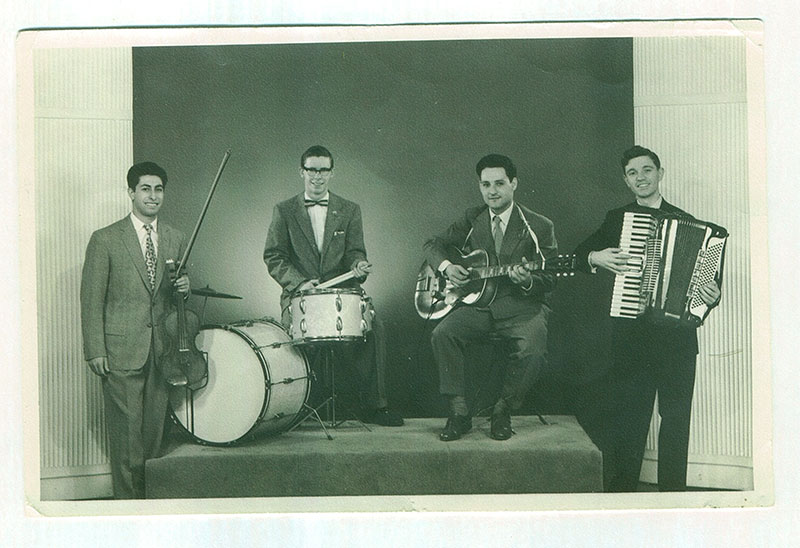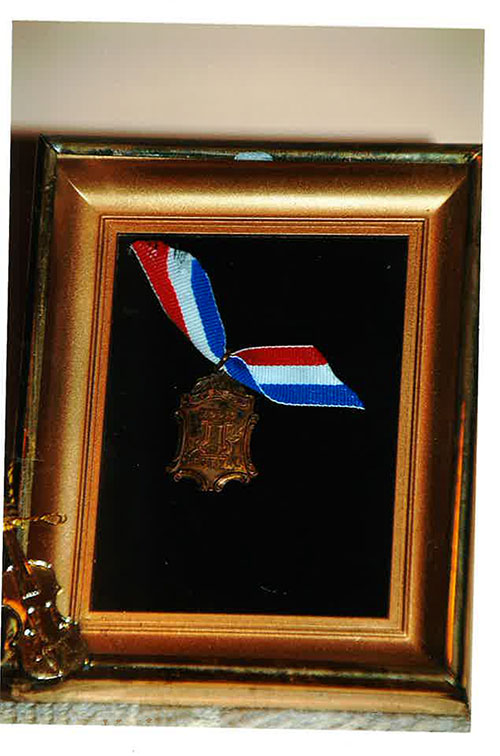Sobey Wall of Honour
Column
175
Row
22
A BRIEF STORY by Nicholas Sbarra
Oh Canada!
A pleasant light breeze was sweeping the air in the sunny mid-morning of Tuesday, June 26, 1951.
The USNS General Harry Taylor, a U.S. merchant ship which served during World War II, was slowly approaching the port of Halifax, N.S. Our family of four was part of a group of hundreds of immigrants assembled tightly at the front section of the vessel.
The large crowd was mostly silent, and so was our family. My father Pasquale, my mother Teresa, sister Eviliana, who was just over fifteen years of age and I, not yet seventeen, were anxiously waiting for the moment when the uncomfortable ocean crossing would finally come to an end. We were taciturn while the sound of the waves striking the ship`s sides broke the monotony of the wait. Our parents` silence probably coincided with the thoughts of the rest of the people on the deck. They were undoubtedly contemplating and pondering about the unknown that was just ahead, realizing that the moment had arrived when new customs, a new language and unfamiliar traditions of the new land would confront everyone. And it is understandable the fact that the subdued multitude of people watching the Canadian shore coming closer and closer were inevitably preoccupied about a new life and what would their place be in a new society. The unpredictable challenges that would be waiting at the threshold of each person’s life was a reality that would place a burden in many situation such as, for example, when attempting to fit in a diverse society while retaining ones’ own traditions – which would undoubtedly be questioned.
But this was not a deterrent that dampened anyone`s expectations at such an eventful juncture of their life. The newcomers, including our family, were excitedly waiting with reserved anticipation the start of a new beginning from the moment they would set foot on a new land and stepped over the threshold of Pier 21. The voyage that started from the port of Bremerhaven, Germany, on June 18, 1951, was over.
The trip began at about 1:00 pm. on June 12, 1951, from the assembly camp in Bagnoli in the outskirts of Naples, Italy. Before sailing for Halifax, N.S. a final inspection took place in Germany during a six days stay in two camps – Tirpitz and then in Lesum located on the outskirts of Bremen. This stopover was normally scheduled before the embarkation of immigrants on ships that would take them to participating countries around the world. Immigration documents and medical certificates were issued. A number of tags, including our destination to Ajax, Ontario, were fastened by safety pins to our garments: one stated “to be fed”. We were destined for farm work in Canada for a specific period – one year was the word at the time. Our family, being ex –refugees, was processed according to the requirements of our status.
Perhaps an obvious question warrants clarification: ”why was our family in refugee camps in our own country of Italy? ”
In 1945, immediately after the end of the conflict, the Yugoslav regime insisted that since our family lived in Istria, a region of Venezia Giulia that became a Yugoslav territory at that time, (now Croatia), we were considered citizen of that nation, regardless of the fact that our country of birth was Italy. The Italian governments’ objection to this claim was ignored by the Slavs. As a result of the impasse between the two countries concerning the disputed nationality of our family we were officially classified as “displaced persons” and of “undetermined nationality of V.G. (Venezia Giulia)“, therefore we became eligible for admission in an Italian Refugee Camp.
Because of this predicament we were later permitted to immigrate to Canada through the umbrella of the International Refugee Organization with headquarters in Geneva, Switzerland (I.R.O.)
(A detailed account of our family’s odyssey at the end of World War II is described in my books “Pier 21 -1951 Our Family’s Immigration to Canada” – copy available at the “Canadian Museum of Immigration at Pier 21” and, to a greater depth – still in progress – in “Nostalgic Memories – a memoir”.)
The custom`s inspection in the big hall of Pier 21 took a while and, as I recall, was impressed by the courteous and pleasant manner in which strangers to a new land were greeted – mostly with a pleasant smile – the Canadian way… There was great commotion in the hall. Some people were hastily walking in every direction in crisscross paths, some other sitting and waiting for their turn – a sense of apprehension was visible on almost everyone’s face – our family was no exception.
We cleared Customs and boarded car No.50 of a slow moving train bound for our final destination. After a stopover in Pickering, Ontario, a bus took the group of immigrants to the ex-army barracks in Ajax, Ontario, where we stayed until July 23, when our family was picked up by automobile by our employer who was the owner of a tobacco farm located mid-way on a country road between West Lorne and Rodney.
We finally arrived at our final destination in the new adopting country – for a short while.
… A breeze of change was in the air…
Life at the farm was difficult for “city people”. A water well was located in the front lawn of our new habitation while the toilet – better known as the out-house – was also outside; both were inconveniences that our family had not experienced even during the war or afterward in refugee camps in Italy.
But life at the farm did not last too long: after the tobacco harvest was completed and after the cost of our family’s trip to Canada was repaid through a deduction from my father’s wages, a surprising turn of events took place.
It was a sunny September morning when our few possessions, a couple of trunks and a few suitcases, were unceremoniously and literally dumped on the sidewalk at the front entrance of the L.& P. S. (London & Port. Stanley) railway station in St. Thomas. Our family was facing the prospect of being forced to consider the unexpected return to Italy created by this unforeseen predicament. My parents had about $230; we did not speak English, did not know anyone in the country and had nowhere to go. But despair turned to hope when late in the day the manager of the Unemployment Office on Mondamin Street was able to contact Mr. Arthur Nicli, the Italian owner of a construction company (The Elgin Construction Co.), who already helped many single Italian young men by providing gainful employment and shelter in barracks on the company’s site. He came to our rescue with jobs for my father and I – and this turned out to be the most consequential factor which allowed our family to take the first steps toward weaving into the Canadian way of life.
There are no word that can sufficiently describe the significance of this helpful hand and the gratitude that our family has felt toward this benefactor. His decision to help us when there was no way out of our quandary, and no assistance in sight, made our life in this wonderful country of generosity and prosperity a reality, not only for our immediate family, but also for all those that will follow us in future generations.
The years passed and events slowly unfolded. In the early part of the fifties my sister Eviliana obtained employment as a switchboard operator with The Bell Telephone Company of Canada, where her pleasing voice provided appropriate greetings to the calling customers until the spring of 1958 when “ …the bell tolled for the switchboard operators of the “Bell” company…” These devoted, well trained and vocalizing employees were silenced by the relentless motion of progress as the communication giant decided to phase out the thousand voices of the operators and replace them with the unspoken efficiency of automated switchboards. Subsequently she did obtain employment in the service industry until her retirement. She married Frank, also an Italian immigrant, and had a son (Rennie).
My parents gained employment in a variety of jobs culminating with occupation for both in the maintenance department of the St. Thomas Elgin General Hospital (S.T.E.G.H.). My fathers’ name has been engraved (posthumously), on one of the bronze plaques adorning the “Hospital Family – Memorial Wall”, inaugurated on December 19, 2001. His name is listed on the commemorative wall with the names of additional worthy recipients being remembered with such an honor, including distinguished physicians and other outstanding employees. This is something he could not have imagined, nor aspired, when he made the faithful decision to cross the ocean and embark upon the unknown. He passed away in 1974 in his 67th year of age while my mother passed away in 2006 in her 93rd year.
Its’ now time to turn to my activities that unfolded subsequent to setting foot on Canadian soil.
My years of employment –
My weaving into the Canadian way of life began in 1952, when, after a short stint in construction work I found employment as a packer in the drug department of VioBin (Canada) Ltd., a pharmaceutical company. Conversations and instructions with co-workers and foremen were mostly carried on by sign language due to my limited ability to express any thoughts in the language of my adopted country. Later I was promoted as the assistant foreman in the drug department. The desire to improve my status was strong and taking a bookkeeping course in the evening at the H.B. Beal Technical School in London, made it possible to start working half days in the firm’s accounting department. Meanwhile the company became part a U.S. based firm (Sternco Industries Inc.) and the “VioBin“ name changed to Hartz Mountain Pet Supplies Ltd.
In 1960 I married Brigitta who came to Canada in 1956 from her native Austria and who, coincidentally, was also working in the company`s drug department. We had two children, Gary born in 1963 and Carol in 1965. This made it imperative that my financial position improve significantly. I decided to enrolled in the five years CMA (ex R.I.A.) accounting course via correspondence through McMaster University in Hamilton. In 1965 I was sent to Stoney Creek, Ont. as the accountant of a subsidiary company. In 1967 I was reassigned back to the St. Thomas office and promoted to the position of Chief Accountant for all of the Canadian operations. But after fifteen years with the company there was a question of whether our family’s financial position would improve sufficiently to allow us to move out of my parent’s house.
January 15, 1968 is the date I began employment with the Department of National Revenue. My duties consisted of many responsibilities ranging from Auditor of the largest corporations in our district to Supervisor in the Business and Special Investigations sections. Also assisted Head Office with special projects and travelled across Canada as a lecturer of tax law. These were some of the duties I performed until I concluded my career with the CRA (new name), as the senior Appeals Officer in the London District office. On June 26, 1996 - 28 ½ years to the day when our family disembarked in Halifax, at Pier 21, I retired from the Public Service.
Some Musical Notes -
A very significant facet of the life that evolved after settling in Canada included my involvement in the artistic world of music. My interest in this field was not merely casual nor superficial, but rather seriously directed toward a path that would have lead toward a professional career. About one year after crossing the gate at Pier 21, I became a young member of the second violins section of the London Symphony Orchestra (this was the continuation of my first experience as a youthful sixteen years old when I became the youngest member of a string orchestra in my native Italy, just about four years after my first violin lesson). Eventually I became the Associate Concert Master of the London Symphony – a position I relinquished in 1963 due to employment commitments and the enrollment in the accounting course. I was a student of Prof. Elie Spivak at the Royal Conservatory of Music, in Toronto. My participation in the musical scene is too extensive to include details in this short compendium, but it suffices to say that I was a participant in most of the musical activities in the London area. These included performances as solo work, duets – including a performance at the 1958 CNE competition where our duo won a gold medal – and soloists in the Concerto in D minor for two violins and orchestra by J.S.Bach performed at the Aeolian Hall under the direction Gordon Jeffery. Further engagements included participation of annual productions at the London Grand Theatre, the University of Western Ontario, Ice Capades, the Brantford Symphony Orchestra, the Capri quartet (one of the small dance groups I assisted organize) and other appearances in a selected small group of musicians engaged when world renown artists such as Nat King Cole, Anita Bryant, etc. visited London, to mention some. The list of performances also included appearances in Southwestern Ontario at various events either as soloist or duets as guests at public functions including presentation of my own compositions at Colleges (i.e. the Victoria College of Music in Toronto). One of my own compositions, not for violin, was published in 1960, and used as a text piece in a London, Ont. festival.
Time for Sports -
No summary would be complete without a passing reference to my life in sports.
Sporting activities were a “thing of the past” after landing at Pier 21, in 1951. Yes, during my tender- years I did participate in a variety of competitive sports action. However, this aspect of my life catapulted into obscurity the moment I left with my family our residence in Chiavari (Italy), and reported at the Bagnoli Camp (Naples), for the initial phase of our family’s process of becoming immigrants.
As a young boy I was an exceptionally fine sprinter and in 1951 I was awarded two medals in the Students’ Games as well as qualifying for the 1500m. provincial run. During the same year I was the captain of the city’s junior soccer team, the Entella, coached by A. Bonetti, a national superstar that played for Triestina, one of the premier teams in Italy in the 1930’s. About eleven years after landing in Canada I resumed some sport activity in one the St.Thomas teams participating in the London & District Soccer League. Taking part in the contests provided the necessary distractions from all of my extra curriculum activities, my studies and the pressures of a demanding occupation. After a few cuts and scrapes, a dislocated elbow and some sore limbs…I finally retired from this demanding sport…the year was 1973 - I was 40 years of age.
In conclusion: Thanks to all those Canadians and non-Canadians who enriched our life in a land where challenges were overcome and opportunities not obstructed by prejudice.
Nicholas C. Sbarra – a grateful immigrant ….!
(2017)
